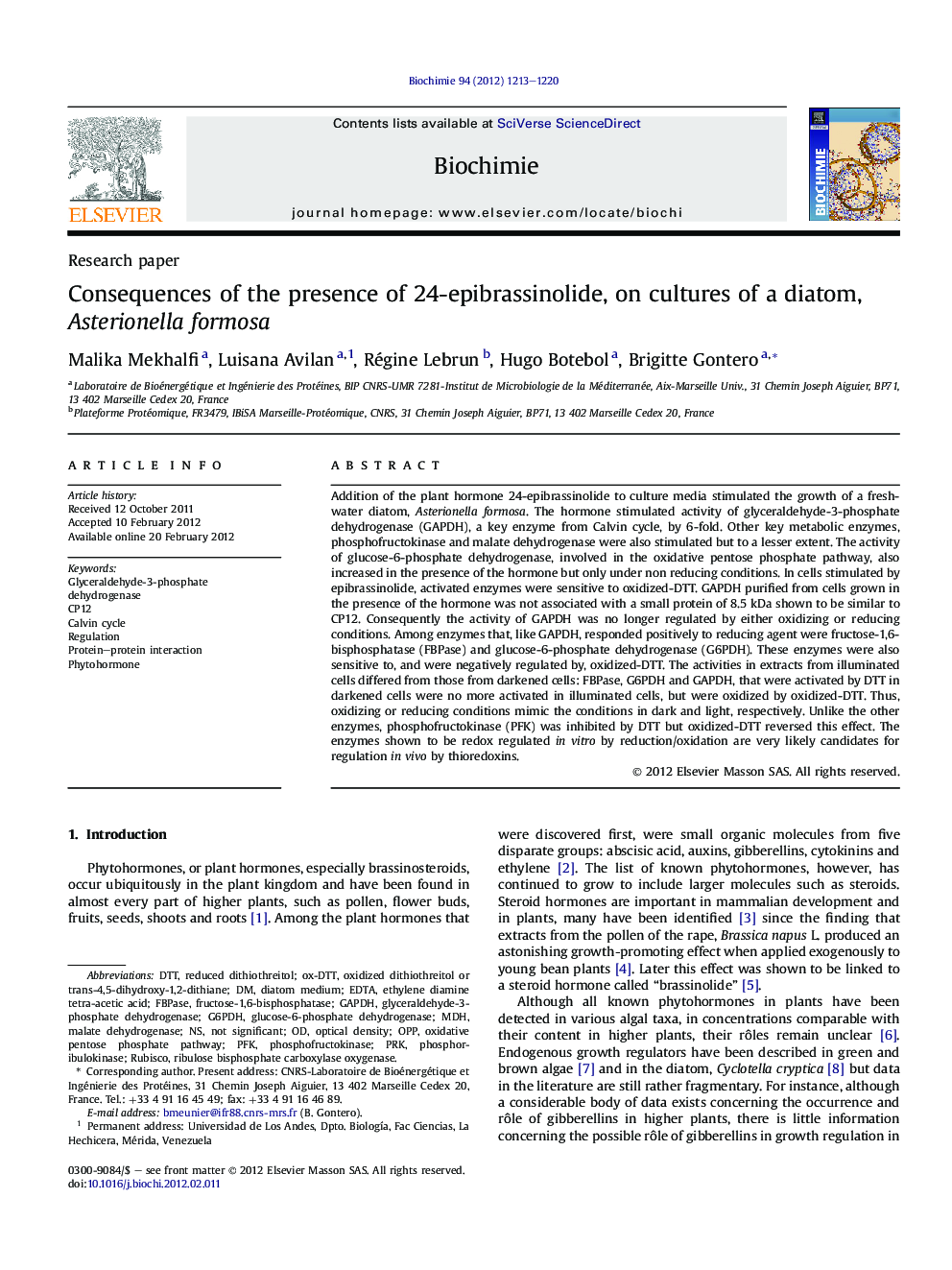| Article ID | Journal | Published Year | Pages | File Type |
|---|---|---|---|---|
| 1952431 | Biochimie | 2012 | 8 Pages |
Addition of the plant hormone 24-epibrassinolide to culture media stimulated the growth of a freshwater diatom, Asterionella formosa. The hormone stimulated activity of glyceraldehyde-3-phosphate dehydrogenase (GAPDH), a key enzyme from Calvin cycle, by 6-fold. Other key metabolic enzymes, phosphofructokinase and malate dehydrogenase were also stimulated but to a lesser extent. The activity of glucose-6-phosphate dehydrogenase, involved in the oxidative pentose phosphate pathway, also increased in the presence of the hormone but only under non reducing conditions. In cells stimulated by epibrassinolide, activated enzymes were sensitive to oxidized-DTT. GAPDH purified from cells grown in the presence of the hormone was not associated with a small protein of 8.5 kDa shown to be similar to CP12. Consequently the activity of GAPDH was no longer regulated by either oxidizing or reducing conditions. Among enzymes that, like GAPDH, responded positively to reducing agent were fructose-1,6-bisphosphatase (FBPase) and glucose-6-phosphate dehydrogenase (G6PDH). These enzymes were also sensitive to, and were negatively regulated by, oxidized-DTT. The activities in extracts from illuminated cells differed from those from darkened cells: FBPase, G6PDH and GAPDH, that were activated by DTT in darkened cells were no more activated in illuminated cells, but were oxidized by oxidized-DTT. Thus, oxidizing or reducing conditions mimic the conditions in dark and light, respectively. Unlike the other enzymes, phosphofructokinase (PFK) was inhibited by DTT but oxidized-DTT reversed this effect. The enzymes shown to be redox regulated in vitro by reduction/oxidation are very likely candidates for regulation in vivo by thioredoxins.
► Epibrassinolide as diatom growth enhancer. ► Epibrassinolide regulates enzyme activity in diatom. ► Epibrassinolide modifies protein–protein interaction of key enzyme. ► Redox regulation of enzymes found in a diatom.
